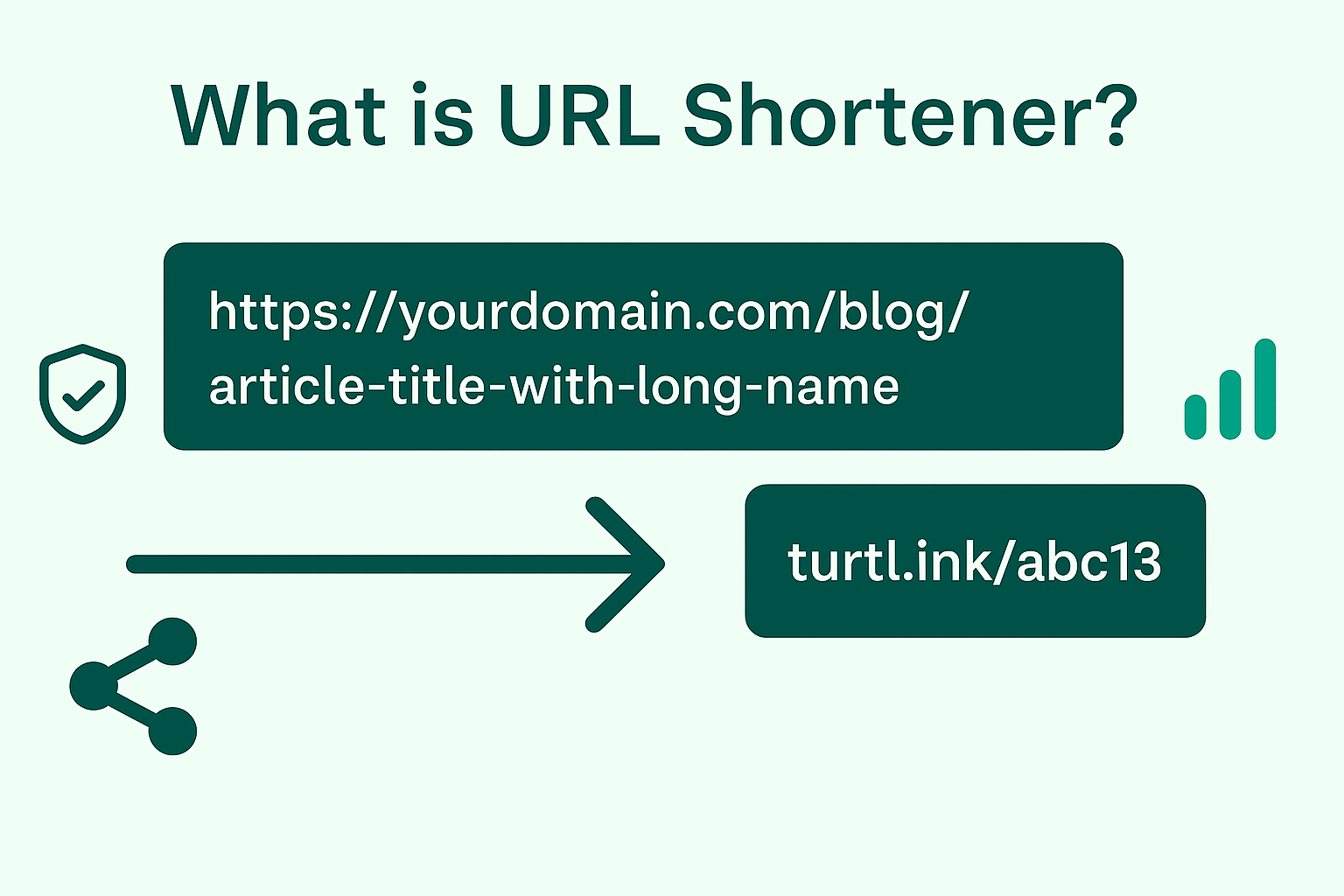What Is a URL Shortener and Why It Matters in 2025
Learn what a URL shortener is, how it works, and why shortened links are essential in 2025 for cleaner URLs, higher trust, and better click-through rates.

In an era where attention spans are shorter and digital first impressions matter more than ever, long and cluttered URLs can be a silent killer for your credibility. Whether you’re sharing a link on social media, embedding it in an email, or adding it to your bio, how your link looks can influence how often it gets clicked — or even trusted.
But what exactly is a URL shortener?
What Is a URL Shortener?
A URL shortener is a tool that takes a long web address (URL) and converts it into a much shorter version that redirects to the same destination. Think of it like a digital nickname for a web page.
For example:
Original URL:
https://yourwebsite.com/blog/how-to-improve-marketing-performance-in-2025-using-automation-and-analytics
Shortened URL:
https://turtl.ink/xYz7v
It works by mapping the short link to the long URL in the background. When someone clicks the short version, the system quickly redirects them to the full address.
Why People Use URL Shorteners
Here are the most common reasons people and businesses use URL shorteners — and why they still matter, especially in 2025:
1. Cleaner and More Professional Appearance
Long URLs look messy and can turn users away. A short, branded link looks more professional, especially when shared in bios, business cards, presentations, or paid ads.
2. Higher Click-Through Rates
Studies show that shorter links lead to higher CTRs, particularly when customized. Platforms like Bitly and TinyURL have reported consistent engagement improvements over raw, long URLs.
3. Better Trust and Shareability
Short links reduce suspicion. Long URLs can appear spammy or dangerous — especially if they include strings of random numbers or tracking parameters.
4. Link Tracking and Analytics
Modern shorteners often come with dashboards to track how many people clicked your link, where they came from, what time they clicked, and even what device they used. This data is crucial for marketers.
5. Link Management
Need to update the destination of a link after it’s been sent? With some URL shorteners, like dynamic short links, you can redirect a link without changing the visible URL. Perfect for campaigns that evolve.
Why It Matters Even More in 2025
In 2025, content creation is exploding, competition is fiercer, and trust is more fragile. Whether you’re a creator, startup, brand, or freelancer, every detail you control contributes to your authority and presence online — including your links.
With increased awareness about cybersecurity, phishing, and data privacy, short links with branded domains offer reassurance. They signal reliability and consistency.
As AI, automation, and smart assistants play a larger role in how people find and interact with content, structured, trackable, and branded links help ensure your content performs well in new ecosystems.
Real-World Examples
- Bitly reports over 10 billion clicks per month across their shortened links.
- TinyURL, launched in 2002, is still widely used for its simplicity and longevity.
- Brands like Nike, CNN, and Spotify use custom domains for short links to reinforce their identity.
Conclusion: The Link Is Just the Beginning
A link may seem like a small detail, but in the fast-paced digital world of 2025, it’s a powerful asset. Whether you’re driving traffic, tracking performance, or building trust — how you share your links matters.
URL shorteners aren’t just tools; they’re part of your communication strategy. And as we continue to move into an age of micro-content and data-driven marketing, having control over your links is no longer optional — it’s essential.